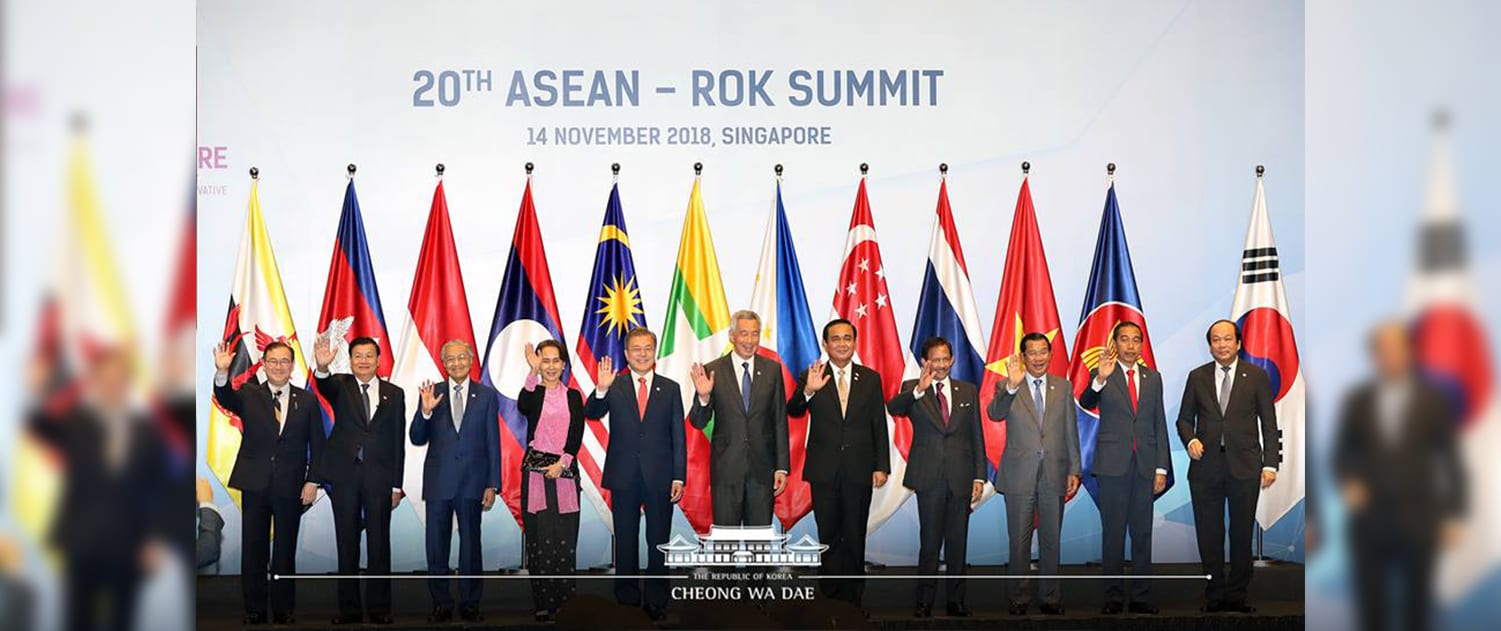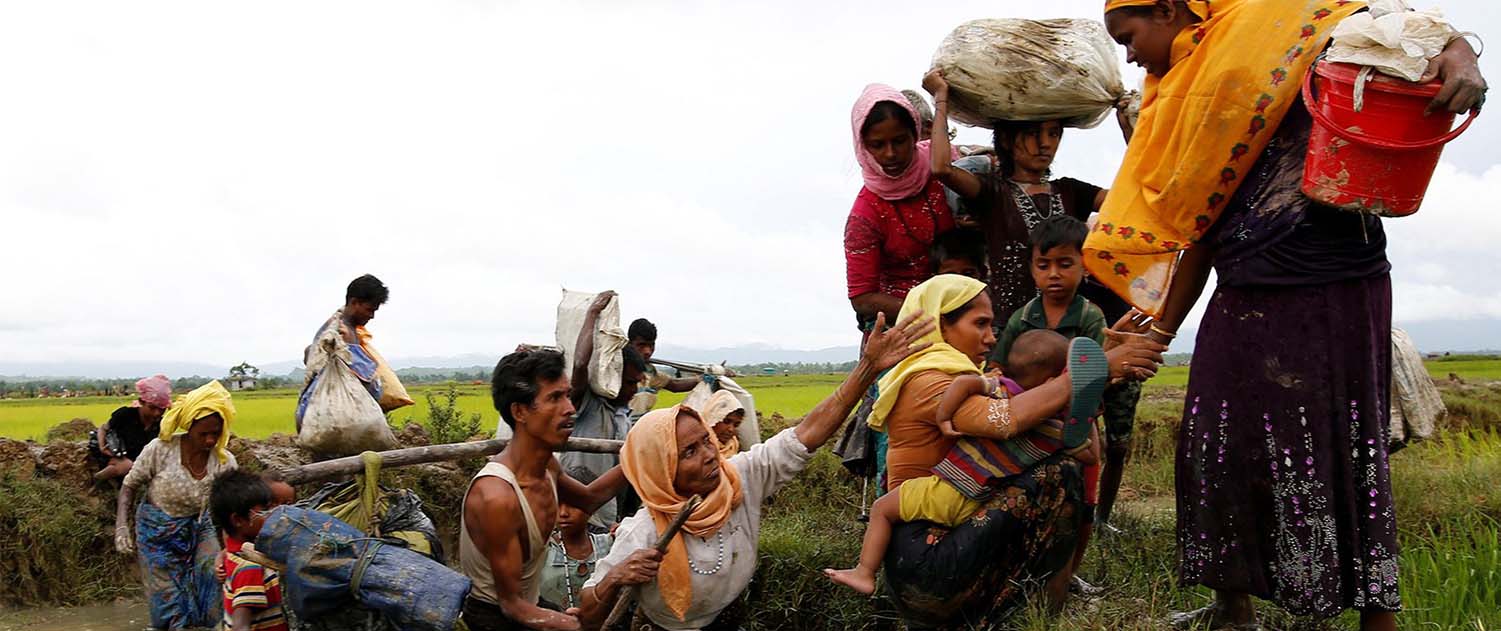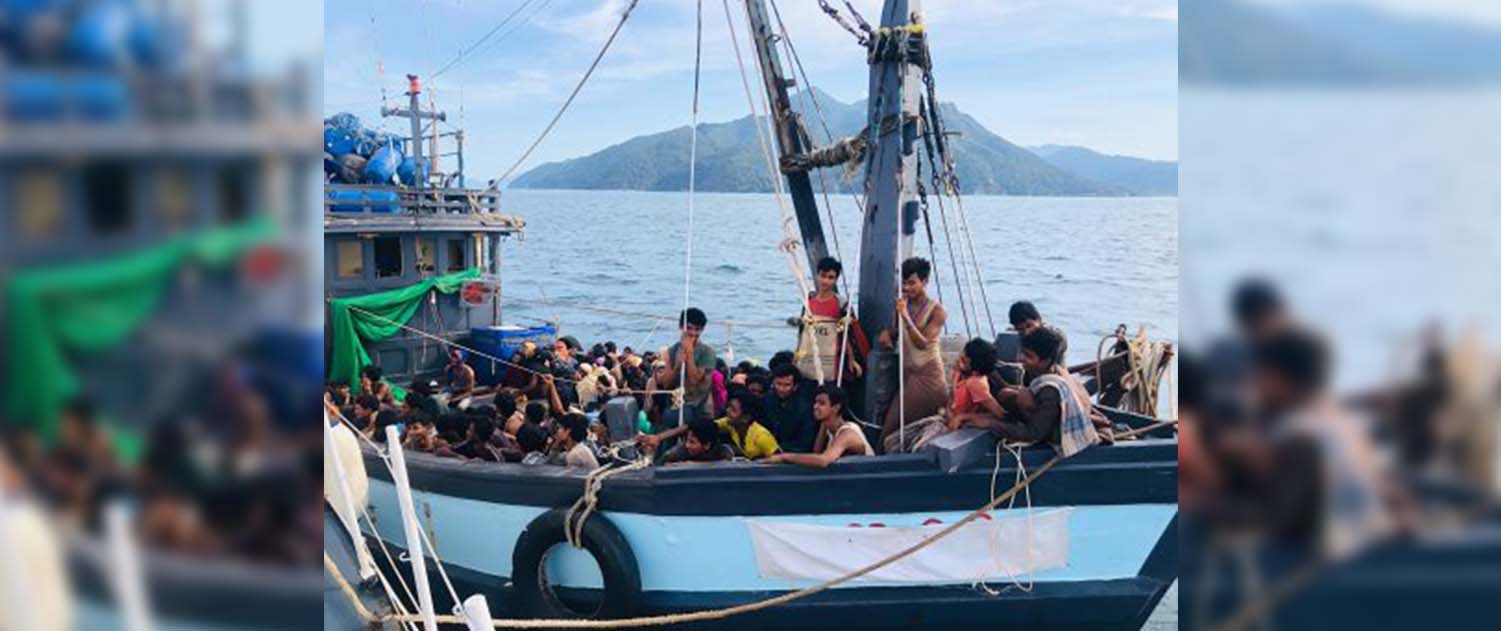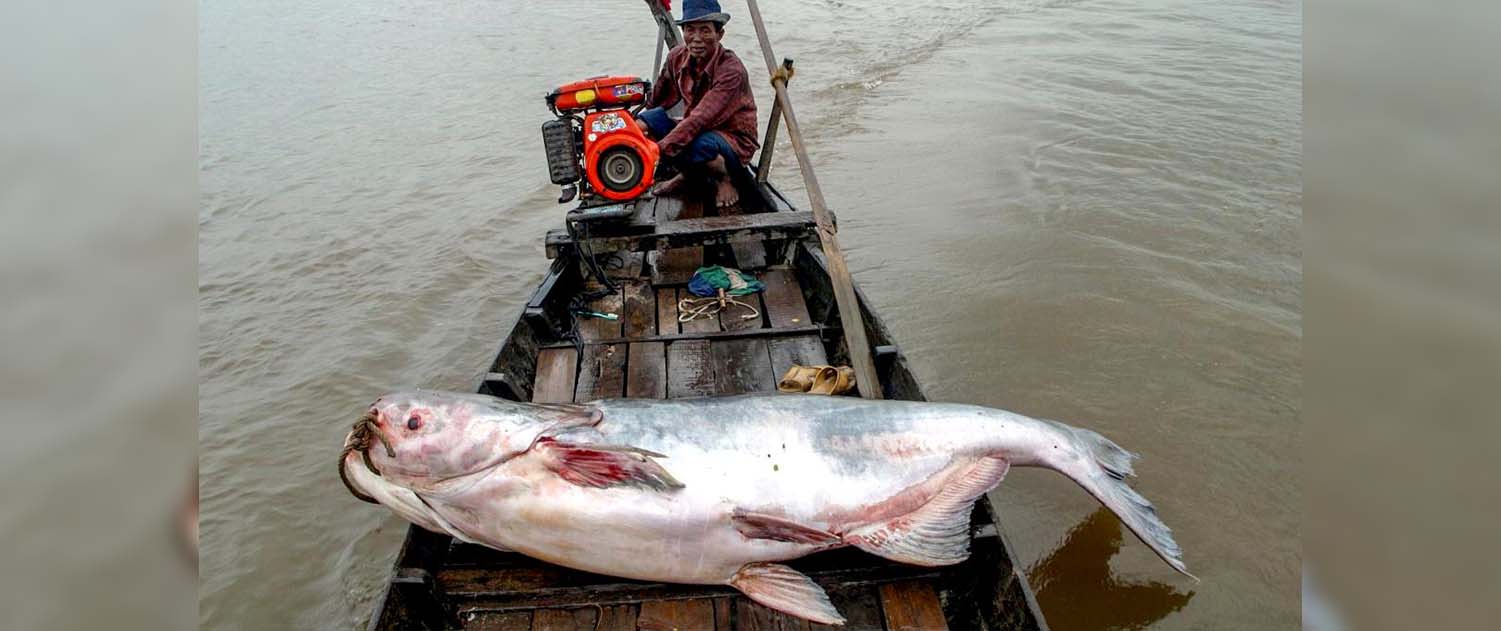By Alifa Salsabila, SH (Picture: Council on Foreign Relations)
In April 2020, the Rohingyas were denied entry to Malaysia due to the country’s fear over Covid-19 transmission. Recently, around a hundred people of the Rohingyas reached Indonesian soil and are locally received by Indonesian citizens while the government has not yet decided any further legal nor diplomatic action aside from having them (the Rohingyas) in Aceh.
The Rohingyas, for the past few years, have become quite a concern of the international community. They were first labeled as “boat people,” signifying phenomena of hundreds of people struggling to reach the nearest shores outside of their home country, Myanmar, which later were identified as the “Rohingyas.” Geographically, the Southeast Asian neighboring countries such as India, Thailand, and Indonesia are the nearest runaways for them.
But it is miserable to learn that the phenomena of the ‘running away Rohingyas’—which have been discovered by international media for more than ten years ago—are still happening today as efforts on diplomatic progress to end oppressions toward the Rohingyas are running sluggish. At the regional level, ASEAN focuses to repatriate hundreds of the Rohingyas. But this effort would never be enough to resolve the case. This article would provide a different approach in helping out the Rohingyas under the ambit of international criminal law.
Roots of the Problem
There are many facets to explain the oppressions to Rohingyas. But all might agree that the oppressions toward them are rooted in the long-time dispute over Myanmar’s historical records that delivers a contestation over the Rohingyas’ legal status whether they are considered as an indigenous group of Myanmar or a group of foreign settlers coming to reside in the country throughout the nineteenth century (Irish Center for Human Rights, 2010).
Myanmar’s government and citizens refer to the Rohingyas as “Bengalis”. For them, the “Bengalis” are groups of Indian laborers and merchants migrating from India hundreds of years ago during the British colonial rule and making them (the Rohingyas) considered as “illegal immigrants” (Southwick, 2018) who take advantages to reside in Myanmar. The Rohingyas are thus known to be the most persecuted minority group in the world (Mohajan, 2018).
In its early days, the oppression toward the Rohingyas was led by an operation in May 1978. The government of Myanmar—having the military backup—launched a fatal operation called “Naga-Min” or translated as “Dragon-Min” Operation whose order was to dispel as many illegal immigrants as possible found residing in Myanmar, which by all means, included the Rohingyas. Arguably, the operation had the Rohingyas as their primary targets (Khairi, 2019). The operation has since then always led and developed the oppressions to the Rohingyas until today.
On the other hand, it is unfortunate to learn that the oppressions to the Rohingyas are driven and fueled by ‘Buddhist nationalism.’ Buddhist nationalism first emerged in Myanmar as a response to fight against the British colonial rule in the region. Back then, Buddhist nationalism significantly contributed to the country’s fight by mobilizing the people of Myanmar—who were referred as the Burmese—through identifying and embracing their Burmese culture whose majority were—and still are—Buddhists. Today, Buddhist nationalism is arguably no longer a pack of cultural values nor historical memories associated with Buddhism. Buddhist nationalism has been brought into contestation over ‘life and death’ matter in which the country’s economics and politics are taking significant parts in. It has now changed the cultural-historical records into narratives of an unbalanced local economic growth and security issues between Myanmar’s citizens in general and the Rohingyas. It is also learned that Buddhist nationalism, in a way, provokes the fear of Islamophobia that Moslem people in Myanmar—which fundamentally signifies the presence of the Rohingyas—would one day take over the country and thus people have to prevent this from happening.
As result, the Rohingyas have been suffering from many kinds of discrimination and a wide range of abuses for so many years. They are denied citizenship rights, limited access to education, healthcare, freedom of mobility, and even giving births (Khairi, 2019). In other cases, they are also suffering from deportation and forced transfer and displacement, rapes, and sexual violence. But, among these all, one form of oppression is less identified than the rest: forced labor that indicates enslavement. As a side note, both forced labor and enslavement are identified as crimes, international crimes, and forms of modern slavery (Siller, 2016).
Forced Labor: Enslavement as A Crime Against Humanity and A Form of Modern Slavery
Enslavement to the Rohingyas is carried out in the form of forced labor. According to the Rome Statute, enslavement is as a crime against humanity which is widely and systematically committed against civilians—which in the case of the Rohingyas is. As enslavement, ‘forced labor’ here is understood as a form oppression that does not target a particular person nor group of people, rather people in general as “civilian population.” The ‘forced labor’ here distinguishes itself from a ‘mere’ forced labor which purely targets workers based on exploitation for profit orientation (money and pleasure) of the employers that takes place in common workplaces.
The legal framework of forced labor as enslavement could be found in Article 7(2)(c) of the Rome Statute. In the Rome Statute, enslavement is explained as “the exercise of any or all of the powers attaching to the right of ownership over a person and includes the exercise of such power in the course of trafficking in persons, in particular women and children.” Historically—prior to having the International Criminal Court (ICC) established—enslavement was included as a crime against humanity in the Article 6(c) of the Charter of the Nuremberg Tribunal, the Nuremberg Principles (Principle VI), Control Council Law No. 10, Article 5 of the statute of the International Tribunal for the Former Yugoslavia (ICTY), and Article 3 of the statute of the International Tribunal for Rwanda (ICTR). It is known that in the ICTY, the judgment of the Krnojelac case decided that “enslavement constituted a crime under customary international law.” The Chamber reiterated that “forced labor, when operating outside of the permissible exceptions under international humanitarian and human rights law, is an established indicator of enslavement.”
In the Rakhine State, the enslavement of the Rohingyas is committed by NaSaKa, a security force formed by the Myanmar government (Southwick, 2018). The enslavement is carried out in the forms of labors that could be conducted seasonal or perennial, including (but not limited to) construction of roads, bridges, model villages and military facilities, camp maintenance, guard and security functions, forced cultivation and agricultural laboring, and even arbitrary taxation. The labors do not distinguish gender roles nor ages—a male or a female and a child or an adult—each of the Rohingyas has to endure the misconduct, difficulties, and mistreatment in their workplace (Farzana, 2017) which the government officials claim are done voluntarily. Consequently, this form of oppression situates the Myanmar authorities namely government officials and military apparatus as the alleged perpetrators (Lee, 2019). This situation seemingly answers questions upon why and how oppressions to the Rohingyas have been so legit to be carried out for long.
Furthermore, forced labor as enslavement is articulating a practice or form of “slavery.” According to Article 1(a) of the 1926 Convention to Suppress the Slave Trade and Slavery, slavery is defined as “the status or condition of a person over whom any or all of the powers attaching to the right of ownership are exercised.” Forced labor delivers a particular realm of modern slavery, slavery-like practices, or contemporary forms of slavery (Allain, 2012). Forced labor becomes the root to identify enslavement as a form of modern slavery, which in the ambit of international law, is customary and strictly prohibited. Having laws forbidding forced labor began along with the commitment of ending slavery as well as practices similar to it.
At the end of the day, even though Myanmar is a non-state party to the Rome Statute, the path to serve justice to the Rohingyas does not end just yet. International law—specifically, international criminal law—provides other options and mechanism to still hold these perpetrators responsible, through the ICC or other courts having international legal personality. As efforts to try the perpetrators from a non-state party at the ICC might sound difficult (but is not impossible), perhaps ASEAN needs to utilize its own body and commitment first. Because apparently, its very own regional mechanism is not able to take enough part in solving the problem, let alone addressing the roots of it, since everything seems to be blocked by the non-interference principle ASEAN is very proud to perform.
As part of the community, the Rohingyas should have had ASEAN as their utmost sanctuary following Myanmar’s failure in providing the protection needed. It has been a common sense in international law that even the non-intervention principle should never be applicable to exceptional circumstances as in humanitarian crises such as what happens to the Rohingyas. The forced labor of the Rohingyas—as a crime against humanity and a portrayal of modern slavery—is among exceptional circumstances needing immediate responses to overcome the emergencies. Therefore, ASEAN does need another approach in resolving the case.
Conclusion
The forced labor here is understood as enslavement. As enslavement, it requires perpetrators to have the crime widely and systematically committed to civilian population rather than to a particular person or group of people, as well as the emphasis on power as an oppression rather an exploitation—and that it targets the Rohingyas—making it categorized as a crime against humanity. At the same time, forced labor is included in slavery-like practices. Moreover, having enslavement as a form of modern slavery could also strengthen the legal framework of international criminal law to prosecute the perpetrators, end the oppression to the Rohingyas, and ‘serve justice to the table.’ Despites the diversities ASEAN has in carrying out the technicalities, forced labor as enslavement articulates modern slavery, common senses, and universalities which international community—including ASEAN—should admit and uphold.
Alifa Salsabila, SH is an American Studies graduate student at Universitas Gadjah Mada. Currently, Alifa is a research intern in Research Division, ASEAN Studies Center UGM. Alifa could be reached at her email: alifafauziar@mail.ugm.ac.id.
REFERENCES
Allain, Jean. (2012). The International Legal Regime of Slavery and Human Exploitation and its Obfuscation by the Term of Art: “Slavery-like Practice”. Civilian Research Development Foundation, 27-42.
Farzana, Kahzi Fahmida. (2017). Memories of Burmese Rohingya Refugees, Contested Identity and Belonging. London: Palgrave Macmillan.
Irish Centre for Human Rights. (2010). Crimes against Humanity in Western Burma: The Situation of the Rohingyas.
Khairi, Aizat. (2019). Supply Chain and Human Trafficking of Rohingya Refugees in Malaysia. International Journal of Innovative Technology and Exploring Engineering 9, 4561-4565.
Lee, Ronan. (2019). Myanmar’s Citizenship Law as State Crime: A Case for the International Criminal Court. State Crime Journal 8(2), 241-279.
Mohajan, Haradhan Kumar. (2018). History of Rakhine State and the Origin of the Rohingya Muslims”. IKAT: The Indonesian Journal of Southeast Asian Studies 2(1), 19-46.
Siller, Nicole. (2016). Does International Law Distinguish between Slavery, Enslavement and Trafficking?”. Journal of International Criminal Justice 14, 405-427.
Southwick, Katherine. (2018). Straining to Prevent the Rohingya Genocide: A Sociology of Law Perspective. Genocide Studies and Prevention: An International Journal 12, 119-142.








